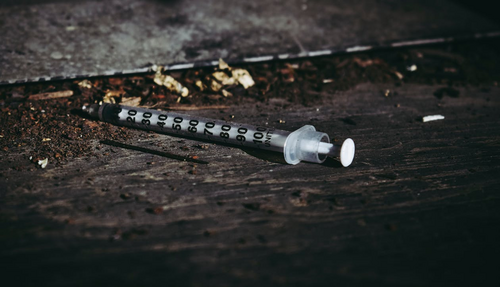
04 Mar The Hidden Health Risks of Improper Medical Waste Disposal
Medical waste is an unavoidable byproduct of healthcare, but when it is not handled correctly, it can become a silent threat to public health and the environment. Hospitals, clinics, and laboratories generate waste materials, from used syringes and surgical instruments to pharmaceutical residues and biological contaminants. If these materials are not disposed of properly, they pose serious health risks to healthcare workers, patients, and the wider community.
Inadequate disposal methods can lead to infections, toxic exposure, and long-term environmental damage. That is why facilities must ensure proper waste management practices, which may include professional roll away dumpster rental services to handle large quantities of medical waste efficiently.
The Threat to Public Health
Medical waste disposal without proper methods allows dangerous pathogens to enter the environment, which results in outbreaks of hazardous diseases. Needles and scalpels along with other contaminated sharps present the greatest danger. Healthcare personnel face the highest risk of contracting bloodborne infections such as HIV and hepatitis B or C through the unsafe disposal of medical waste, which also threatens waste collectors, as well as members of the general public.
The improper disposal of medical waste leads to water contamination as a secondary effect. The entry of pharmaceutical waste, chemicals, and infected biological material into water supply systems generates substantial health threats. The development of antibiotic-resistant bacteria occurs in untreated waste, which creates treatment challenges for medical professionals. The release of hospital and clinic contaminants causes pollution of groundwater resources, which then flows into nearby rivers and lakes, thus endangering whole communities.
Burning medical waste without appropriate environmental controls leads to dangerous toxins entering the atmosphere. Dioxins and mercury constitute two pollutants from waste burning operations, resulting in respiratory diseases, birth defects, and serious health consequences. The situation demands immediate intervention because unsafe disposal practices in cities with already poor air quality create a serious environmental challenge.
The Impact on the Environment and Wildlife
Medical waste management problems create effects which surpass human health outcomes. Environmental ecosystems and wildlife face detrimental consequences from improper disposal of hazardous waste materials. Scavenging animals occasionally encounter contaminated waste, which spreads disease through their bodies. Medical waste objects that are sharp or chemical toxins create dangerous situations that lead to animal poisoning, harming ecosystems.
Medical institutions generate plastic waste that joins the accumulating environmental pollutants. Plastic medical supplies, including gloves, syringes, and IV bags, have extended longevity because they resist easy degradation. Medical waste placed in landfills without correct processing methods remains in the environment for many decades, thus increasing the existing plastic pollution crisis. The degradation of various plastics results in microplastic fragments that enter food chains and create health uncertainties for humans.
The presence of hazardous chemicals including disinfectants and heavy metals alongside radioactive materials in waste produces contaminated soil. These chemicals accumulate in soil until they transform the land into areas that cannot be used for farming or human settlements. The generation of substantial waste amounts regularly presents a serious problem around healthcare facilities. Proper waste removal solutions are essential because improper waste management leads to permanent environmental damage.
The Need for Responsible Waste Management
All healthcare facilities need to follow strict waste disposal protocols to prevent these risks. Healthcare facilities must separate medical waste during the initial collection process to properly isolate dangerous materials from regular waste items. Medical staff should use puncture-resistant containers to discard sharps while biohazardous waste needs autoclaving or chemical disinfection procedures for treatment. All pharmaceuticals must be collected by certified waste management services for appropriate disposal instead of drainage disposal.
Many regions face difficulties with government regulation enforcement regarding medical waste disposal safety requirements. Facilities make financial decisions that result in poor disposal practices, which include illegal dumping and improper management methods. When businesses work with professional waste removal experts, they can prevent both health problems and environmental harm. Greensboro facilities can use professional waste management services, providing secure waste disposal services that meet federal and local regulations.
Conclusion
Medical waste disposal without proper care creates urgent health problems for humans and environmental destruction. The risks from inadequate waste management include disease spread, water contamination, and wildlife damage, which must be taken seriously. Healthcare facilities and regulatory bodies must collaborate with waste management services for proper medical waste handling and responsible disposal. Effective waste disposal methods with dependable waste removal solutions help reduce risks to protect our communities and environment.
More information:
——
The information on MedicalResearch.com is provided for educational purposes only, and is in no way intended to diagnose, cure, or treat any medical or other condition.
Some links are sponsored. Products and services are not tested, warranted or endorsed.
Always seek the advice of your physician or other qualified health and ask your doctor any questions you may have regarding a medical condition. In addition to all other limitations and disclaimers in this agreement, service provider and its third party providers disclaim any liability or loss in connection with the content provided on this website.
Last Updated on March 4, 2025 by Marie Benz MD FAAD
